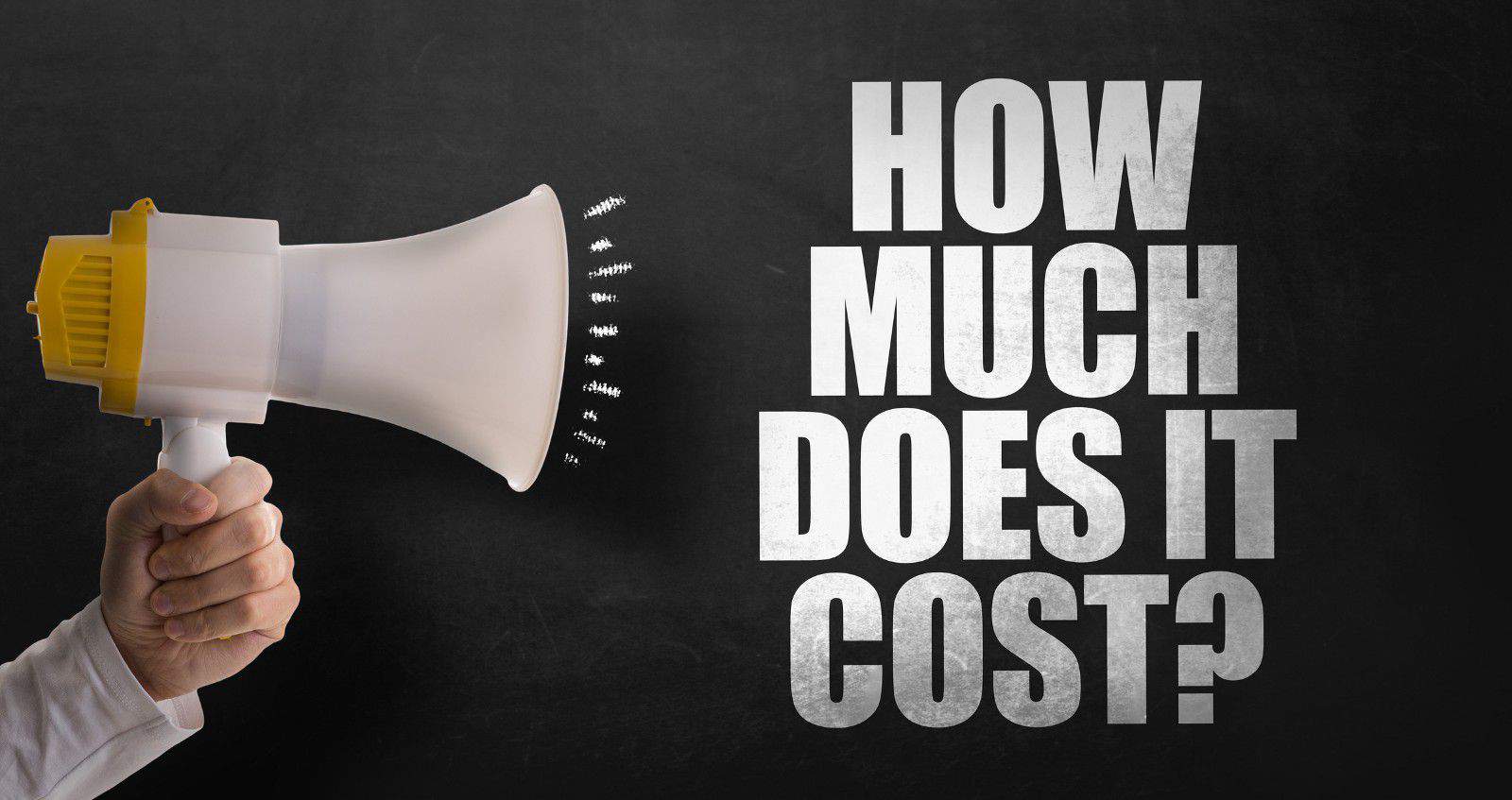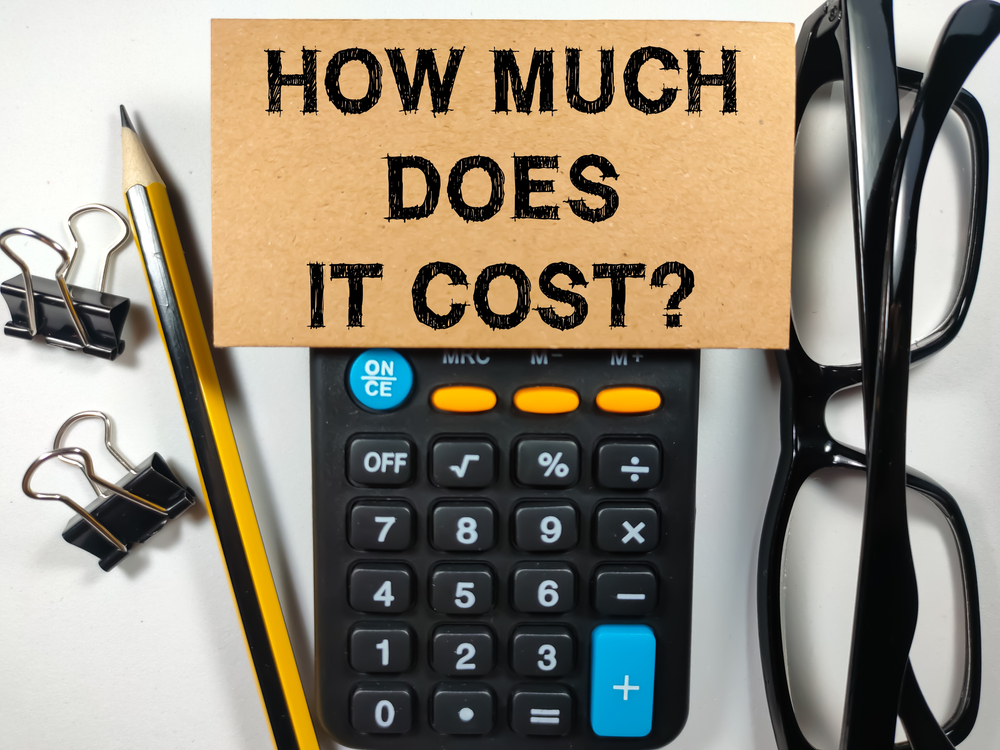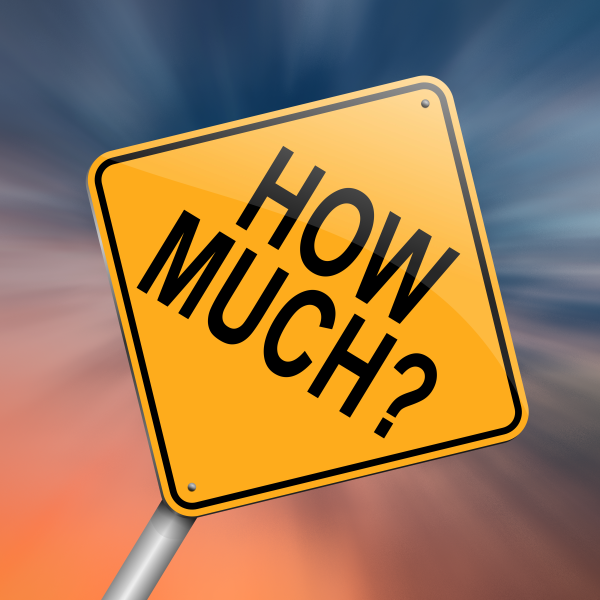"How much does it cost?" is a question that arises in various aspects of life, from budgeting for daily expenses to making significant financial decisions. For instance, determining the cost of a new car, a college education, or a home renovation project requires careful consideration.
Understanding the cost of goods and services is essential for making informed choices. It helps individuals allocate their resources effectively, avoid unexpected expenses, and plan their financial goals. Historically, the concept of cost has evolved from barter systems to complex computations that factor in production, distribution, and marketing costs.
This article delves into the significance of understanding "how much does it cost" by examining its implications for personal finance, budgeting, investment decisions, and overall financial literacy.
How Much Does It Cost
Assessing the cost of goods, services, and projects is crucial for informed decision-making and financial literacy. Key aspects to consider include:
- Production Costs
- Distribution Costs
- Marketing Costs
- Overhead Costs
- Profit Margin
- Economies of Scale
- Supply and Demand
- Time Value of Money
Understanding these aspects helps individuals accurately estimate expenses, compare options, and make optimal financial choices. For example, considering the time value of money allows for informed decisions on investments and savings, while understanding economies of scale can help businesses make strategic production and pricing decisions.
Production Costs
Production costs are a critical component of "How Much Does It Cost". They directly influence the final price of a product or service and play a significant role in determining its profitability. Production costs include expenses incurred during the creation of a product, such as raw materials, labor, manufacturing, and overhead.
Understanding production costs is essential for businesses to set competitive prices, optimize production processes, and maximize profits. For example, a manufacturer of clothing needs to consider the cost of fabric, labor for cutting and sewing, factory overhead, and shipping costs when determining the wholesale price of a garment.
In practical terms, businesses can leverage this understanding to identify cost-saving opportunities, such as negotiating better prices with suppliers, implementing lean manufacturing techniques, or outsourcing certain production processes to reduce labor costs. By carefully managing production costs, businesses can improve their profitability and remain competitive in the market.
Distribution Costs
Distribution costs are a crucial element of "How Much Does It Cost", significantly impacting the final price of products and services. They encompass expenses associated with transporting, storing, and delivering goods from the production facility to the end consumer.
- Transportation Costs
These include expenses for shipping products via land, sea, or air, as well as the costs of fuel, tolls, and insurance.
- Warehousing Costs
These cover the expenses of storing products in distribution centers or warehouses, including rent, utilities, and inventory management.
- Order Fulfillment Costs
These involve the expenses associated with processing and packing orders, as well as the labor costs for picking, packing, and shipping products.
- Customer Service Costs
These include expenses related to providing customer support, handling inquiries, and resolving any issues related to product delivery.
Understanding distribution costs is essential for businesses to optimize their supply chains, reduce expenses, and improve customer satisfaction. By carefully managing these costs, businesses can ensure efficient and cost-effective delivery of products to their customers, ultimately contributing to increased profitability and customer loyalty.
Marketing Costs
Marketing costs play a significant role in determining "How Much Does It Cost". These costs encompass expenses associated with promoting and advertising products or services to potential customers, and they can have a substantial impact on the overall cost of bringing a product or service to market.
Marketing costs can include expenses for market research, advertising campaigns, public relations, social media marketing, content creation, and more. These costs are essential for businesses to create awareness, generate leads, and drive sales. By investing in effective marketing strategies, businesses can increase demand for their products or services, ultimately justifying the additional costs incurred.
Real-life examples of marketing costs can be seen in various industries. For instance, a tech company may invest heavily in digital marketing campaigns to promote a new software product. A fashion brand may allocate a significant portion of its budget to print and online advertising to showcase its latest collection. These marketing costs are crucial for these businesses to reach their target audience, build brand recognition, and generate revenue.
Understanding the relationship between marketing costs and "How Much Does It Cost" is essential for businesses to make informed decisions about their marketing strategies. By carefully evaluating the potential return on investment (ROI) from marketing campaigns, businesses can optimize their marketing spend and maximize the impact of their marketing efforts on overall profitability.
Overhead Costs
Overhead costs comprise a critical component of "How Much Does It Cost", capturing the indirect expenses associated with running a business. These costs are not directly tied to production or distribution but are essential for the overall functioning and support of the organization. Understanding the connection between overhead costs and "How Much Does It Cost" is crucial for informed decision-making and financial planning.
Overhead costs can include expenses such as rent, utilities, salaries for administrative and support staff, insurance, property taxes, and depreciation. While these costs may not be directly involved in production, they are nonetheless indispensable for maintaining the operational infrastructure of the business. For example, without adequate office space, utilities, or administrative support, a business would struggle to function effectively.
Real-life examples of overhead costs can be found across various industries. A manufacturing company may incur overhead costs for factory administration, quality control, and maintenance. A retail store may have overhead costs for store rent, utilities, and staff salaries. These costs contribute to the overall "How Much Does It Cost" of producing goods or providing services.
Understanding the relationship between overhead costs and "How Much Does It Cost" allows businesses to optimize their operations, minimize expenses, and make informed pricing decisions. By carefully managing overhead costs, businesses can improve profitability, increase efficiency, and gain a competitive edge in the market. Additionally, this understanding enables businesses to accurately forecast future expenses and plan for long-term financial stability.
Profit Margin
Within the context of "How Much Does It Cost", profit margin holds significant importance, representing the financial gain derived from the sale of products or services. It is calculated as a percentage of revenue and serves as a crucial indicator of a company's profitability and efficiency.
- Gross Profit Margin
This measures the profit earned from sales after deducting the direct costs of producing goods or providing services. It reflects the efficiency of a company's production and cost management.
- Operating Profit Margin
This measures the profit earned from core operations after deducting all operating expenses, excluding non-operating items such as interest and taxes. It provides insights into a company's operational efficiency and profitability.
- Net Profit Margin
This measures the profit earned after deducting all expenses, including non-operating expenses. It represents the overall profitability of a company and is a key indicator of financial performance.
Understanding the components of profit margin is essential for businesses to analyze their financial performance, make informed pricing decisions, and identify areas for improvement. By carefully managing costs, optimizing operations, and increasing revenue, businesses can improve their profit margins and enhance their overall financial health. Profit margin analysis also enables investors and analysts to evaluate the financial strength and investment potential of companies.
Economies of Scale
Within the ambit of "How Much Does It Cost", economies of scale play a pivotal role in understanding cost dynamics. Economies of scale refer to the cost advantages that arise when a business increases its production or service output.
- Increased Production Efficiency
As production volume increases, businesses can spread fixed costs over a larger number of units, leading to lower per-unit costs.
- Bulk Discounts
Suppliers often offer discounts for bulk purchases of raw materials or components, reducing the cost of goods sold.
- Specialized Machinery and Processes
Investing in specialized machinery and implementing efficient processes can enhance productivity and reduce labor costs.
- Operational Leverage
Fixed costs, such as rent and administrative expenses, remain relatively constant as output increases, resulting in a higher profit margin.
Economies of scale have significant implications for "How Much Does It Cost". By leveraging these advantages, businesses can produce goods or services at a lower cost, enabling them to offer competitive prices, increase profitability, and gain market share. Conversely, businesses that fail to achieve economies of scale may face higher production costs and reduced profitability.
Supply and Demand
Within the realm of "How Much Does It Cost", the interplay of supply and demand exerts a significant influence on pricing dynamics and resource allocation. Supply refers to the quantity of goods or services available in the market, while demand represents the desire and ability of consumers to purchase those goods or services.
- Market Equilibrium
The point at which supply equals demand establishes the market equilibrium price. At this price, there is neither a shortage nor a surplus of goods or services.
- Price Elasticity
The responsiveness of supply or demand to changes in price. Elastic markets exhibit significant changes in quantity supplied or demanded in response to price fluctuations.
- Supply Chain Disruptions
Events that disrupt the production or distribution of goods can lead to supply shortages, causing prices to rise.
- Consumer Preferences
Changes in consumer tastes and preferences can shift demand, impacting prices and production decisions.
Understanding the relationship between supply and demand is crucial for businesses to optimize pricing strategies, forecast market trends, and make informed decisions about production and inventory management. By analyzing market conditions and anticipating changes in supply and demand, businesses can position themselves to meet customer needs effectively while maximizing profitability.
Time Value of Money
When evaluating "How Much Does It Cost", incorporating the concept of "Time Value of Money" becomes essential. It recognizes that the value of money changes over time, significantly influencing financial decisions and cost calculations.
- Present Value
The current worth of a future sum of money, considering the time value of money and a specified interest rate. This concept is crucial in capital budgeting and investment decisions.
- Future Value
The value of a current sum of money at a future date, taking into account compound interest. It plays a vital role in savings planning and long-term financial goals.
- Discount Rate
The interest rate used to calculate the present value of future cash flows. Choosing an appropriate discount rate is critical in project evaluation and investment appraisal.
- Opportunity Cost
The potential return on an alternative investment that is forgone when choosing another option. Considering opportunity cost helps individuals make informed financial decisions.
Understanding the Time Value of Money allows individuals and businesses to make sound financial decisions that maximize the value of their money over time. It enables them to compare investment options, plan for future expenses, and evaluate the true cost of borrowing or lending money.
In exploring "How Much Does It Cost", this article has illuminated several key ideas and findings. Firstly, understanding the components of cost, such as production, distribution, and marketing costs, is crucial for accurate cost estimation and informed decision-making. Secondly, factors like economies of scale, supply and demand, and the time value of money significantly influence the dynamics of "How Much Does It Cost". Lastly, considering these factors enables individuals and businesses to make optimal financial choices, maximize profitability, and plan effectively for the future.
The significance of "How Much Does It Cost" extends beyond mere financial implications. It empowers individuals to make informed choices, manage their resources wisely, and achieve their financial goals. Understanding the concept enables businesses to optimize their operations, gain a competitive edge, and contribute to economic growth. As the world continues to evolve, it is essential to stay abreast of the factors that determine "How Much Does It Cost" to navigate financial complexities and make sound decisions.



Detail Author:
- Name : Eliezer Cassin
- Username : dmurray
- Email : chris01@hotmail.com
- Birthdate : 2001-06-21
- Address : 5841 Ledner Trafficway Apt. 173 Lake Rhettton, CT 41413
- Phone : +15709481714
- Company : Trantow-Rath
- Job : Locksmith
- Bio : Quas qui est nostrum incidunt non temporibus. Omnis illo quaerat laudantium. Aut quas voluptatem dignissimos.
Socials
facebook:
- url : https://facebook.com/bauch1984
- username : bauch1984
- bio : Eos voluptatem iusto possimus quo omnis laudantium.
- followers : 6013
- following : 1408
instagram:
- url : https://instagram.com/parker5269
- username : parker5269
- bio : Et enim aliquam qui quibusdam. Vel minima et et qui.
- followers : 1885
- following : 808
tiktok:
- url : https://tiktok.com/@parker601
- username : parker601
- bio : Necessitatibus impedit qui assumenda et saepe.
- followers : 6396
- following : 2877
linkedin:
- url : https://linkedin.com/in/pbauch
- username : pbauch
- bio : Nihil cum atque provident qui ut at veritatis.
- followers : 5194
- following : 1042
twitter:
- url : https://twitter.com/parkerbauch
- username : parkerbauch
- bio : Est voluptatem qui veniam dolores sed. Eum impedit facilis molestiae. Aut rerum quibusdam omnis eum enim.
- followers : 2538
- following : 295